| | US Vice President JD Vance says the Gaza ceasefire is holding, China’s US soybean imports fall to ze͏ ͏ ͏ ͏ ͏ ͏ |
| |  | Flagship |  |
| |
|
The World Today | 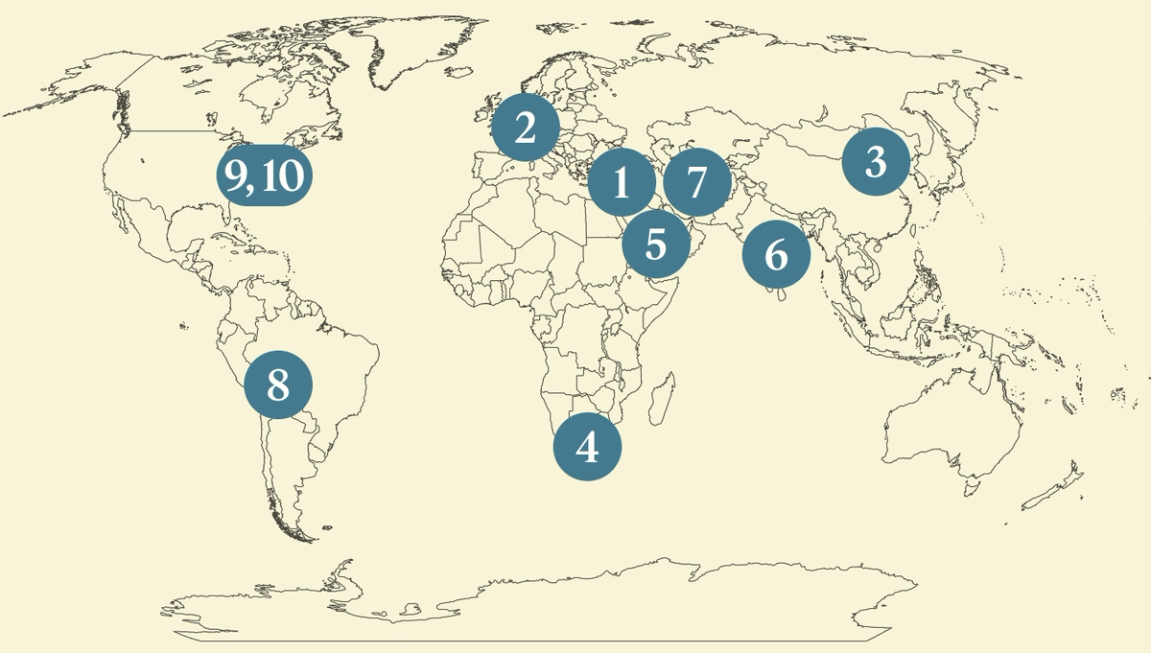 - US VP hopeful for ceasefire
- Western intel fractures
- China-US trade tensions
- SAfrica-US trade tensions
- MBS confirms DC visit
- New Delhi shrouded in haze
- Iran’s solar power boom
- Bolivia to tap lithium stores
- Gold prices plunge
- A gold medal pianist
 A recommendation for an exhibition that deals with ‘the utopian aspirations and inevitable failures of modernity.’ |
|
Vance says Gaza ceasefire holding |
 Nathan Howard/Pool via Reuters Nathan Howard/Pool via ReutersUS Vice President JD Vance said on a visit to Israel the fragile ceasefire with Hamas was holding, despite accusations by each side that the other had violated the deal. The comments came as Israel and Hamas exchanged the bodies of captives, a key demand of the truce. Analysts have said long-term drivers of the conflict remain unaddressed, but voiced hope the deal may hold, particularly thanks to pressure from Washington, with Vance’s trip the latest sign of continued American involvement. The US VP said things were going “better than I expected” while visiting a new US-Israeli ceasefire coordination center. Gazans counter, however, that little has changed in the devastated territory while NGOs warned far more aid was needed. |
|
Western intelligence ties fracture |
 Yves Herman/Reuters Yves Herman/ReutersTwo top Dutch spies said their country was not sharing intelligence with the US over fears that Washington may use confidential information to help Russia or undermine human rights, the latest sign that Western cooperation is fracturing. The frank remarks by the heads of the Netherlands’ domestic and military intelligence agencies follow recent reports that US officials blocked close allies from receiving updates on Russia-Ukraine negotiations and sought to eject Canada from an Anglosphere spy network. Broader changes to intelligence-sharing are also being driven by what Western nations see as the threat from China: A policy paper by a leading Australian think tank proposed Canberra head up an alliance of Pacific nations to focus on the risks posed by Beijing. |
|
China’s US soybean imports fall to zero |
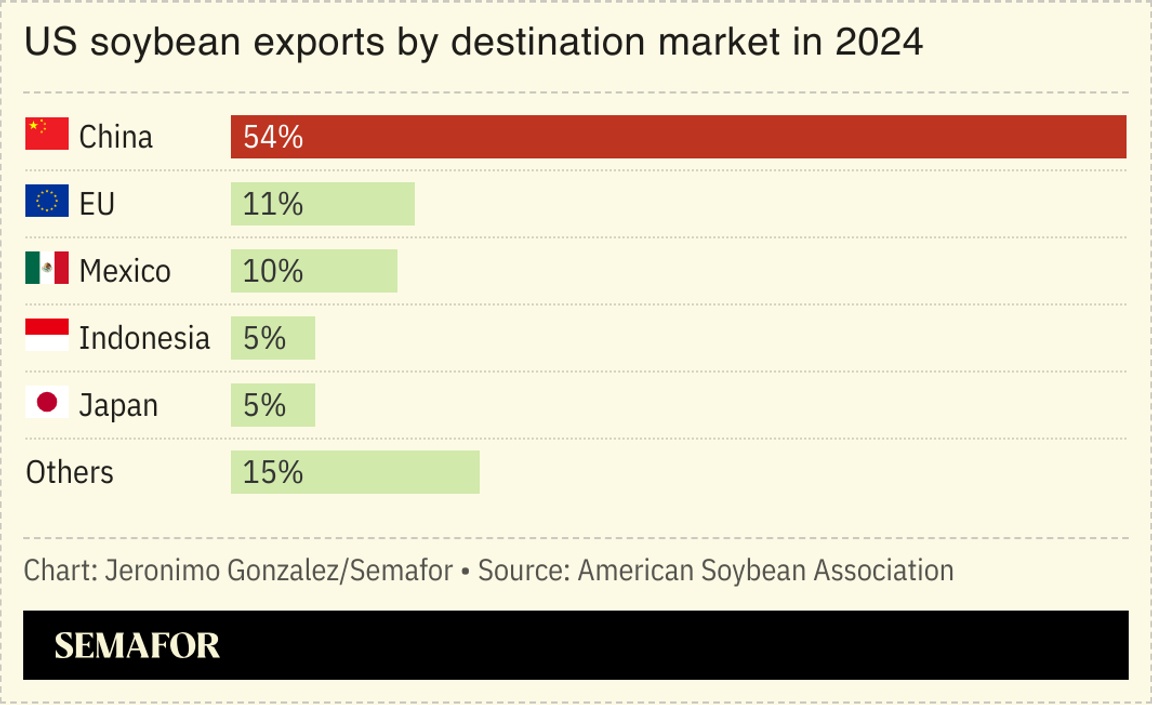 China’s imports of US soybeans fell to zero last month for the first time since 2018, a bruising move for American producers as the trade dispute between the world’s two biggest economies drags on. The tit-for-tat trade spat has devastated the US soy industry — China is the world’s largest importer — and created a political headache for US President Donald Trump: Farmers have been a bastion of support, and the White House is considering bailing them out. Some respite may be on the horizon, however, after top US and Chinese trade officials held talks over the weekend and pledged to resume negotiations to lower tensions in their trade war as early as this week. |
|
SAfrica rebuffs US trade pressure |
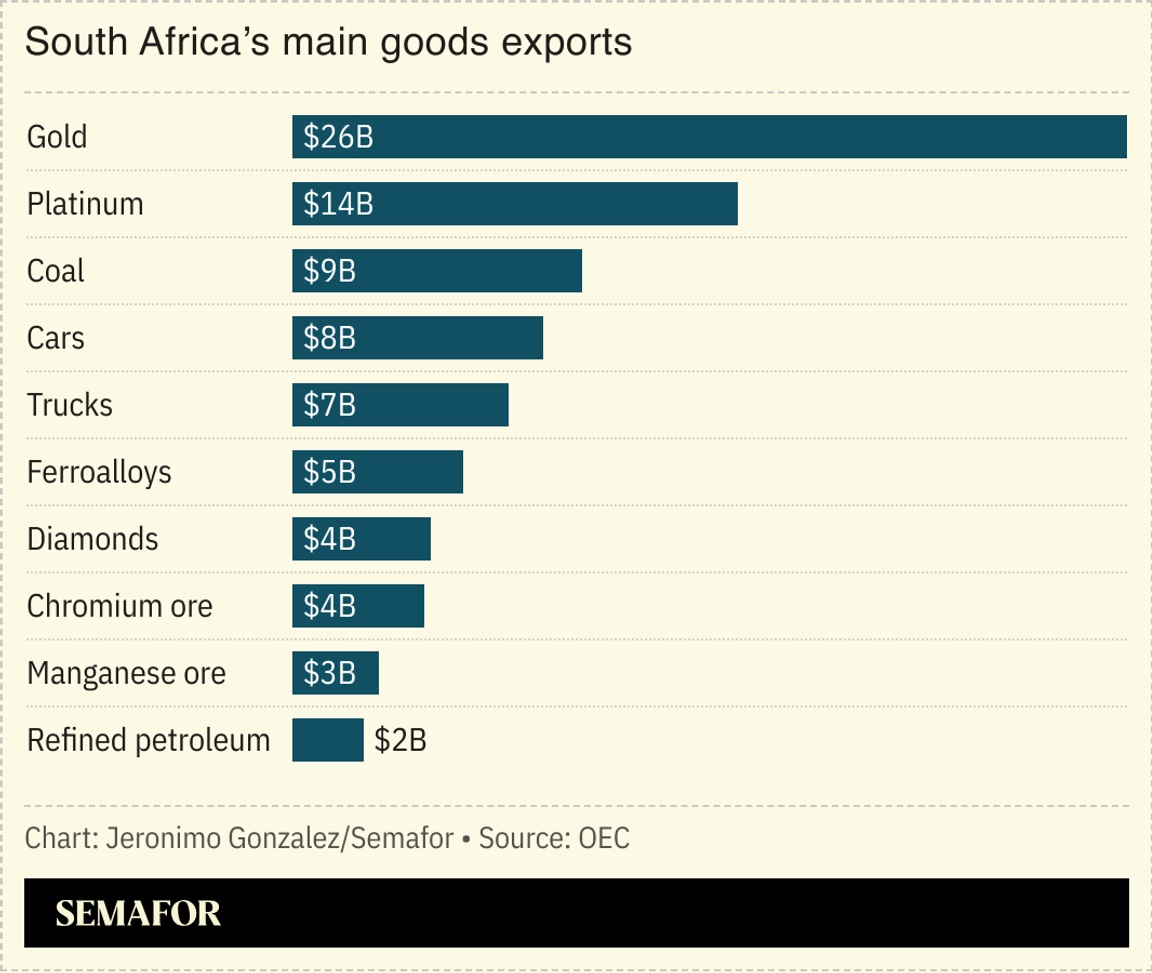 South Africa accused the US of politicizing trade talks, rebuffing Washington’s pressure to scrap Black empowerment laws the White House argues are unfair. South Africa’s Foreign Minister Ronald Lamola said the Trump administration was trying to force “domestic” issues into trade talks, which South Africa had hoped would lead to a reduction of punishing tariffs Washington imposed in August. The Trump administration has said Pretoria is subjecting its white population to a “genocide,” and relations are unlikely to improve with a domestic political fight brewing over repealing race-based government procurement rules. Trump’s tariffs could cost Africa’s most industrialized economy as many as 100,000 jobs, with some fearing that the country could fall further into China’s sphere. |
|
Saudi’s MBS to meet with Trump |
 Brian Snyder/File Photo/Reuters Brian Snyder/File Photo/ReutersSaudi Arabia’s de facto ruler will visit the US for talks with President Donald Trump next month, officials confirmed, with regional security and investment expected to be discussed. Crown Prince Mohammed bin Salman’s Nov. 18-19 trip — his first to Washington since 2018 — underscores how his efforts to rebuild his international reputation are bearing fruit after Saudi Arabia’s killing of the Saudi journalist Jamal Khashoggi triggered global opprobrium. Alongside myriad bilateral trade and investment announcements, the two countries are potentially set to agree a defense pact, though this will probably fall short of a full treaty, which is not likely to win Congressional backing in Washington. |
|
Delhi pollution hits five-year high |
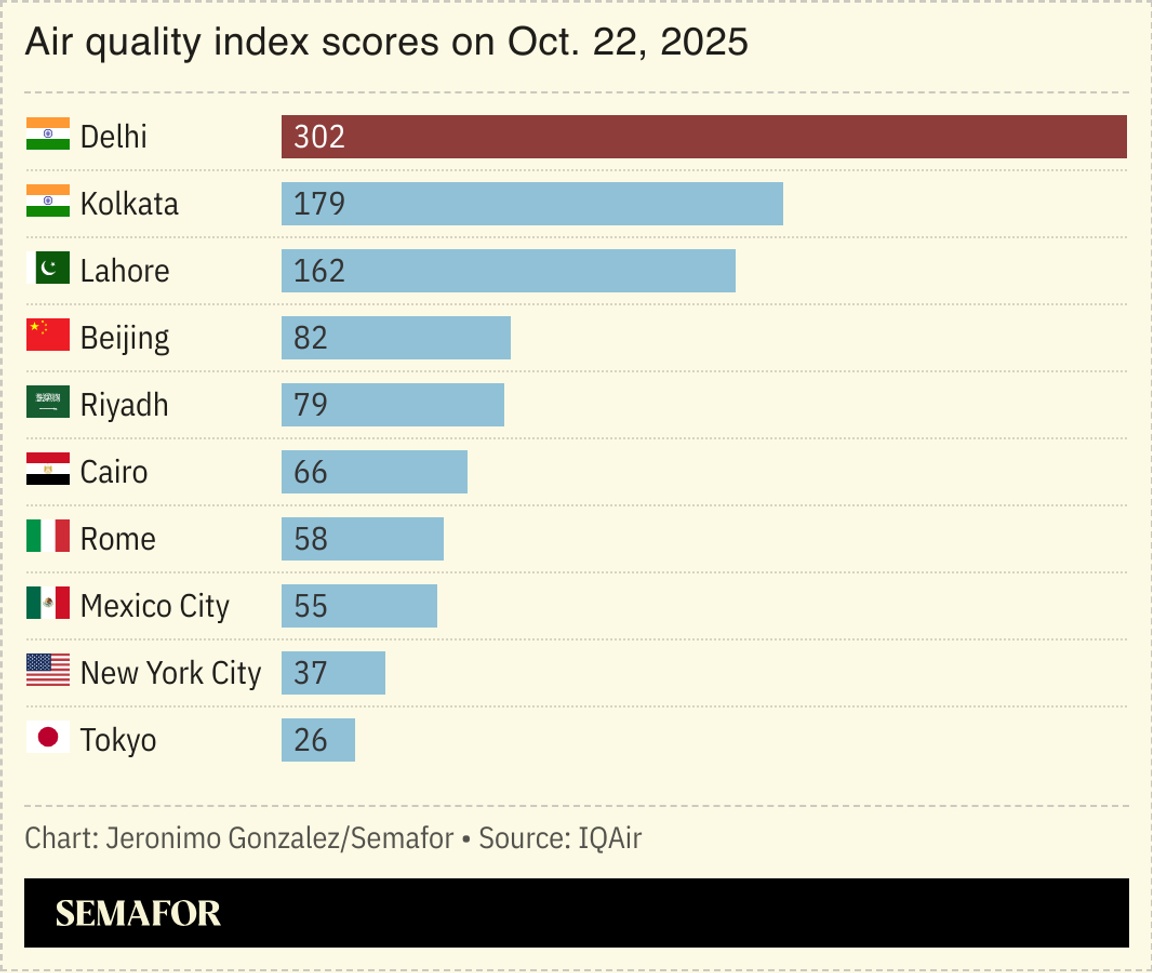 Air pollution in New Delhi hit a five-year high this week, as Diwali fireworks combined with farming fires to shroud the city in a toxic haze. The annual spike has become something of a tradition in the megalopolis, with some parts of the city this week recording an air-quality index reading of 1,800 — 20 times higher than levels the World Health Organization deems healthy. The news points to the challenge facing Indian authorities as they look to combat pollution and cut carbon emissions: The country has made huge progress in deploying renewable energy, but will still need up to $21 trillion in new investments in order to meet its 2070 net-zero target, according to government plans reported by Bloomberg. |
|
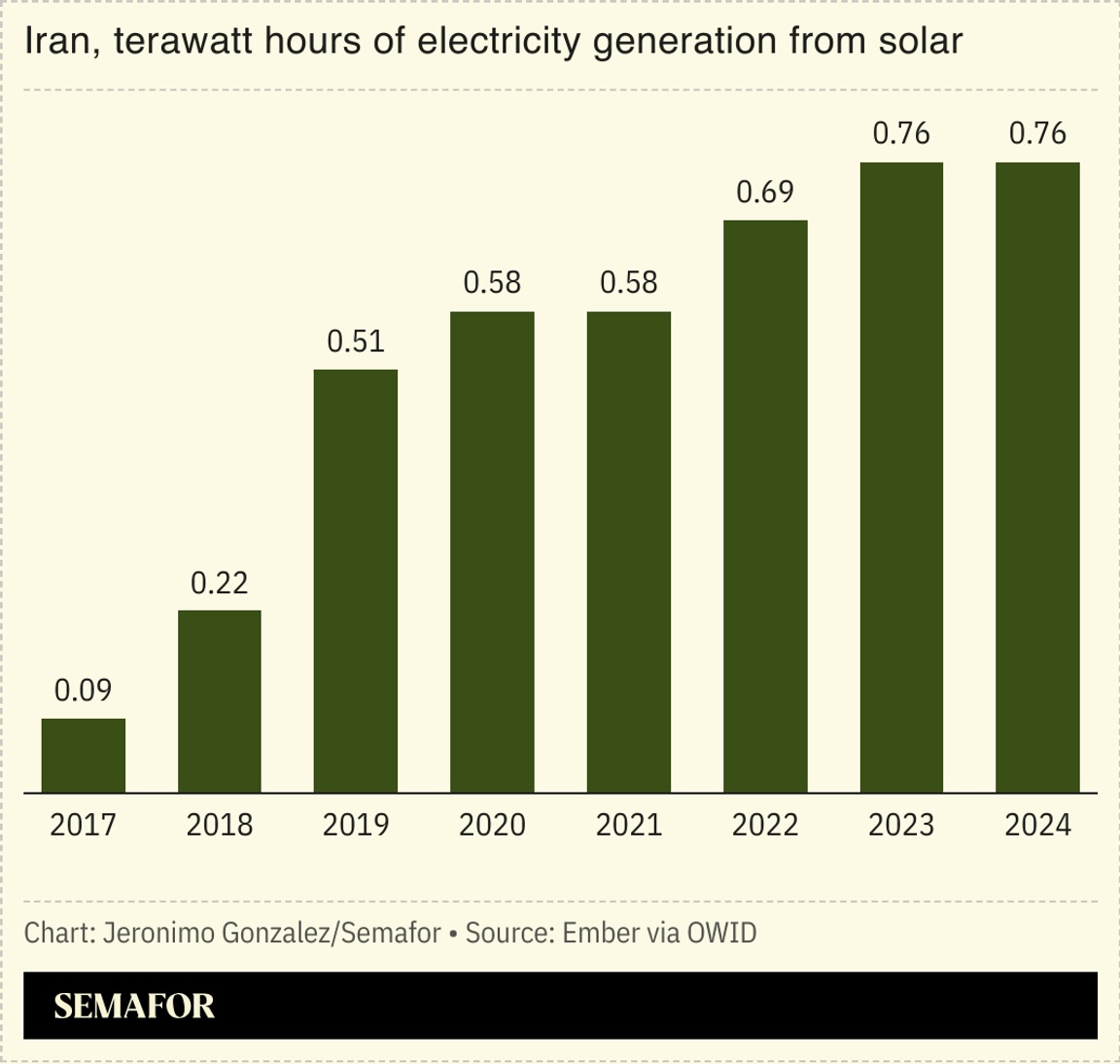 Iran is upping efforts to roll out solar power projects nationwide, the latest developing nation to turn to the sun in an effort to address power shortages and shore up energy security. Renewable electricity has “evolved from a supportive policy to a strategic necessity,” an Iranian minister said in Tehran this week: The country’s solar capacity doubled this year, and officials want to increase it a further fourfold in three years. Other emerging markets are making even more aggressive progress: Pakistan has seen solar go from essentially nonexistent to accounting for nearly a fifth of all its power within a few years, while Africa overall saw a 60% increase of Chinese solar panel imports over the course of a year. |
|
Bolivia courts lithium investments |
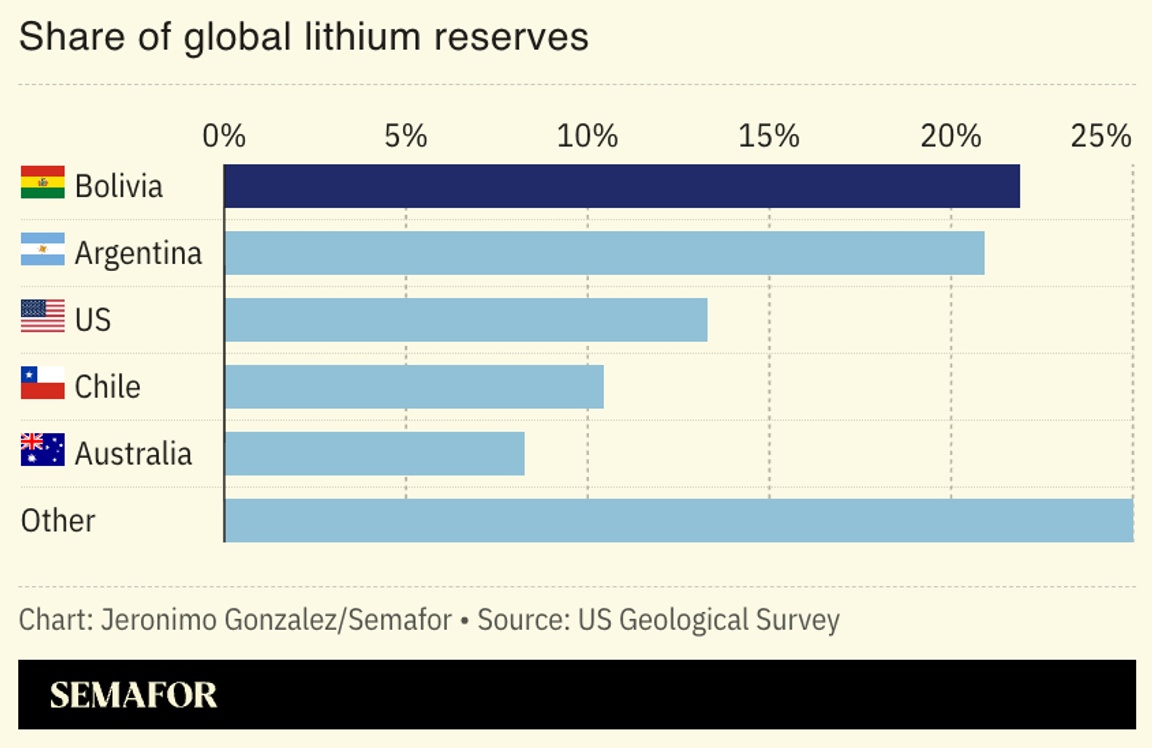 Bolivia’s new centrist president rekindled hope that the country’s lithium reserves may finally be exploited. State control of the industry under successive socialist governments has sidelined the foreign investment and know-how required to mine the metal, highly prized in the energy transition and in particular for the manufacture of EV batteries. Rodrigo Paz has vowed to revisit foreign mining contracts blocked by Congress, hoping that investments will bolster the economy as he looks to restore Bolivia’s crumbling finances: Budget deficits have hovered around 10% for years, while the country has run out of dollars to stabilize the economy. The pro-market “honeymoon, whether it lasts 4, 6, or 12 months, will hit the reality of Bolivia’s financial situation,” one expert wrote. |
|
Gold prices drop after historic high |
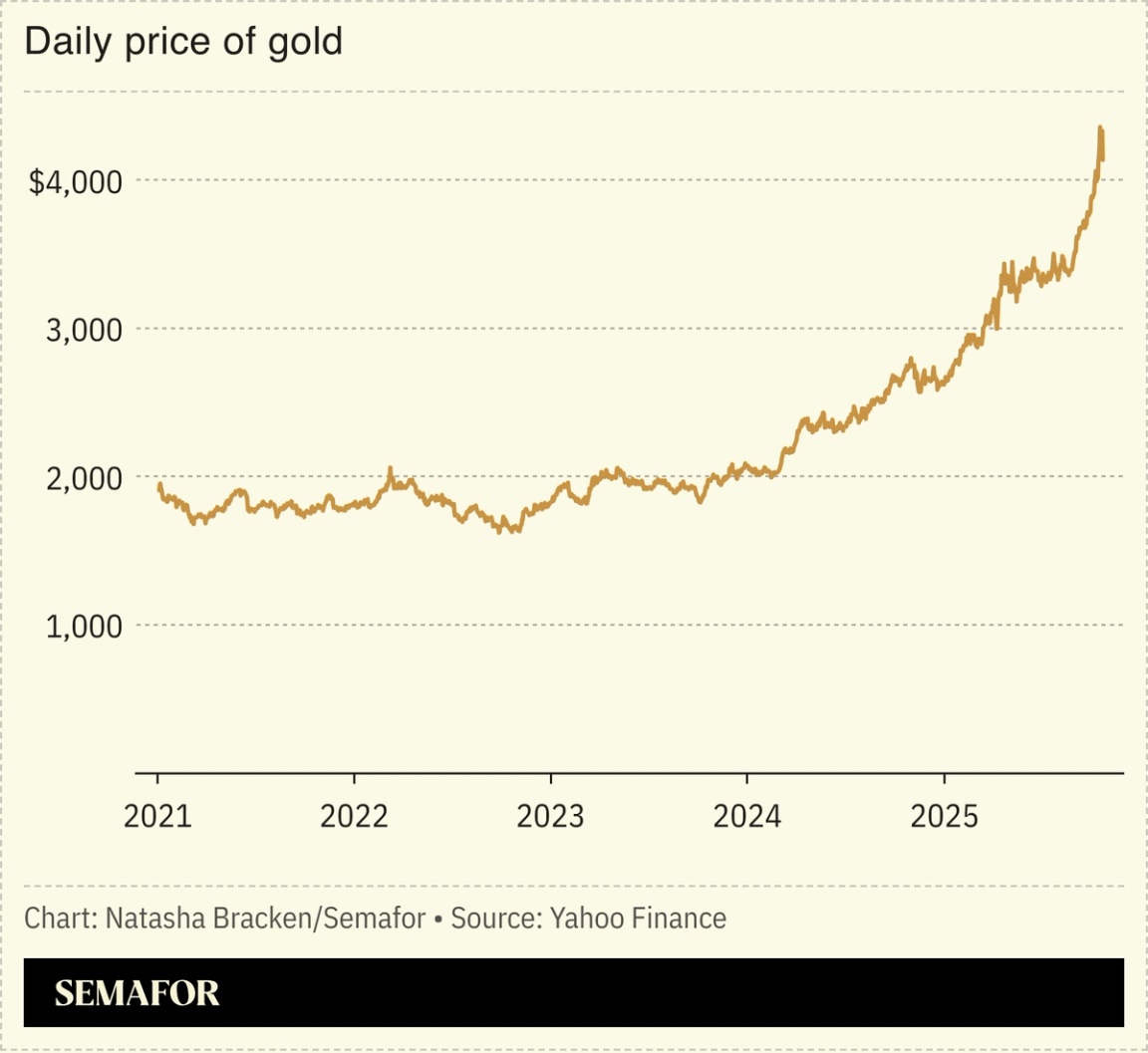 Gold prices fell by the most in 12 years after a weeks-long rally sent the metal to successive record highs. Numerous factors, including positive trade talks between the US and China and a strengthening dollar, led to bullion dropping more than 6%. However, gold prices remain around double their recent average, underscoring investors’ dimming confidence in stocks that some analysts warn are approaching a bubble. Appetite in artificial intelligence stocks has driven a market frenzy that has sent indices to record highs, with a recent Bank of America survey showing a record 91% of analysts saying US shares were overvalued. |
|
|